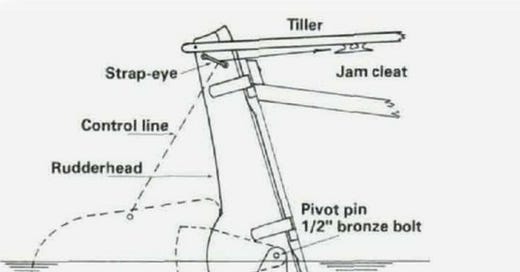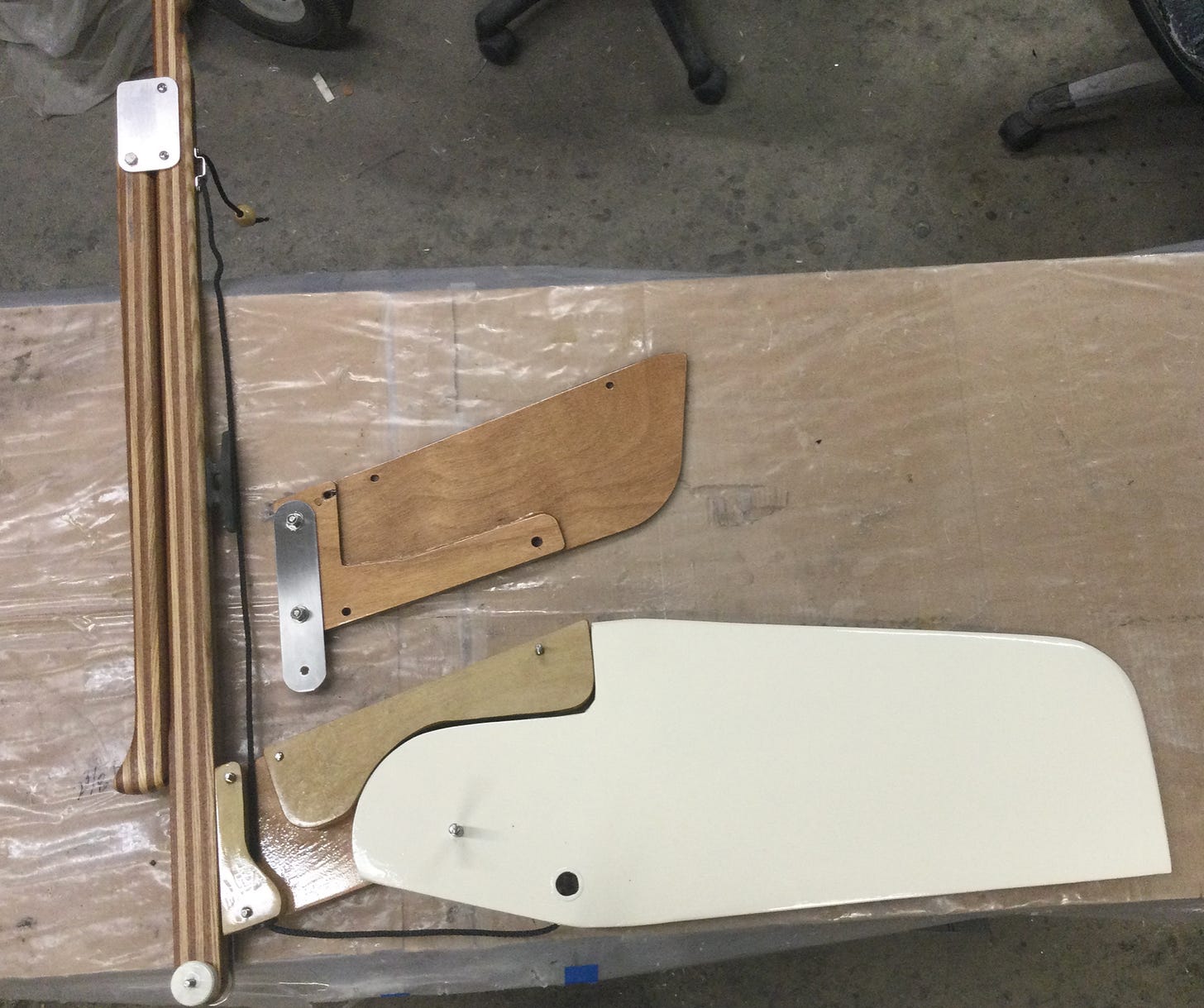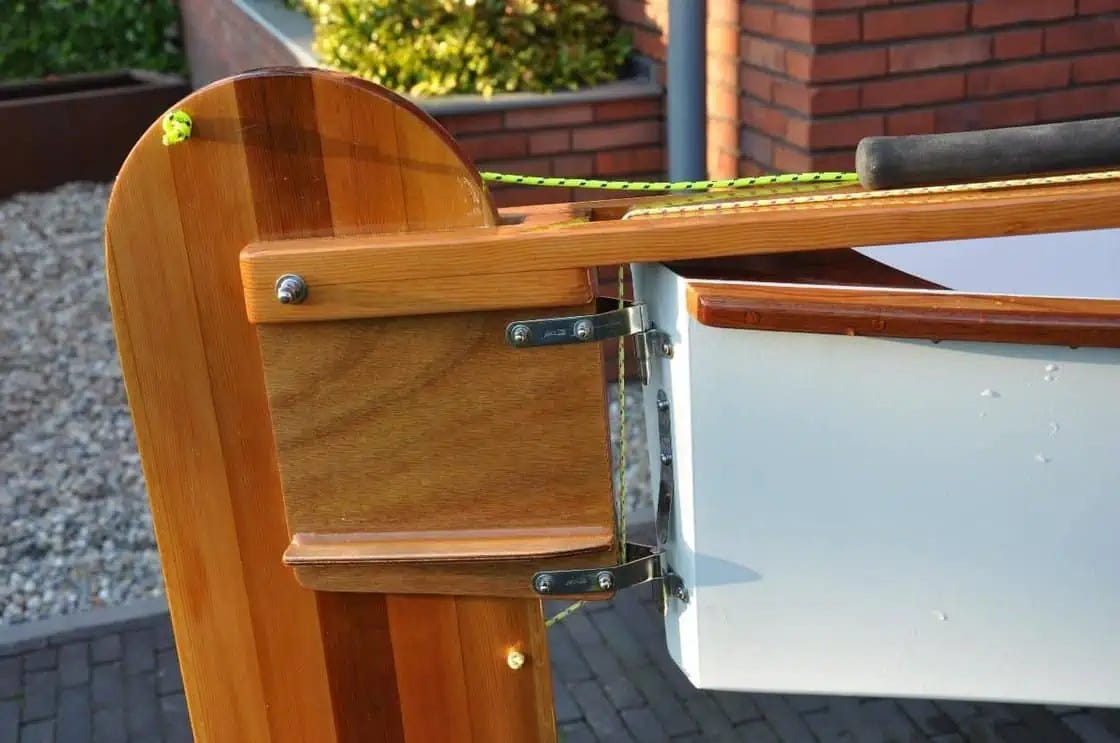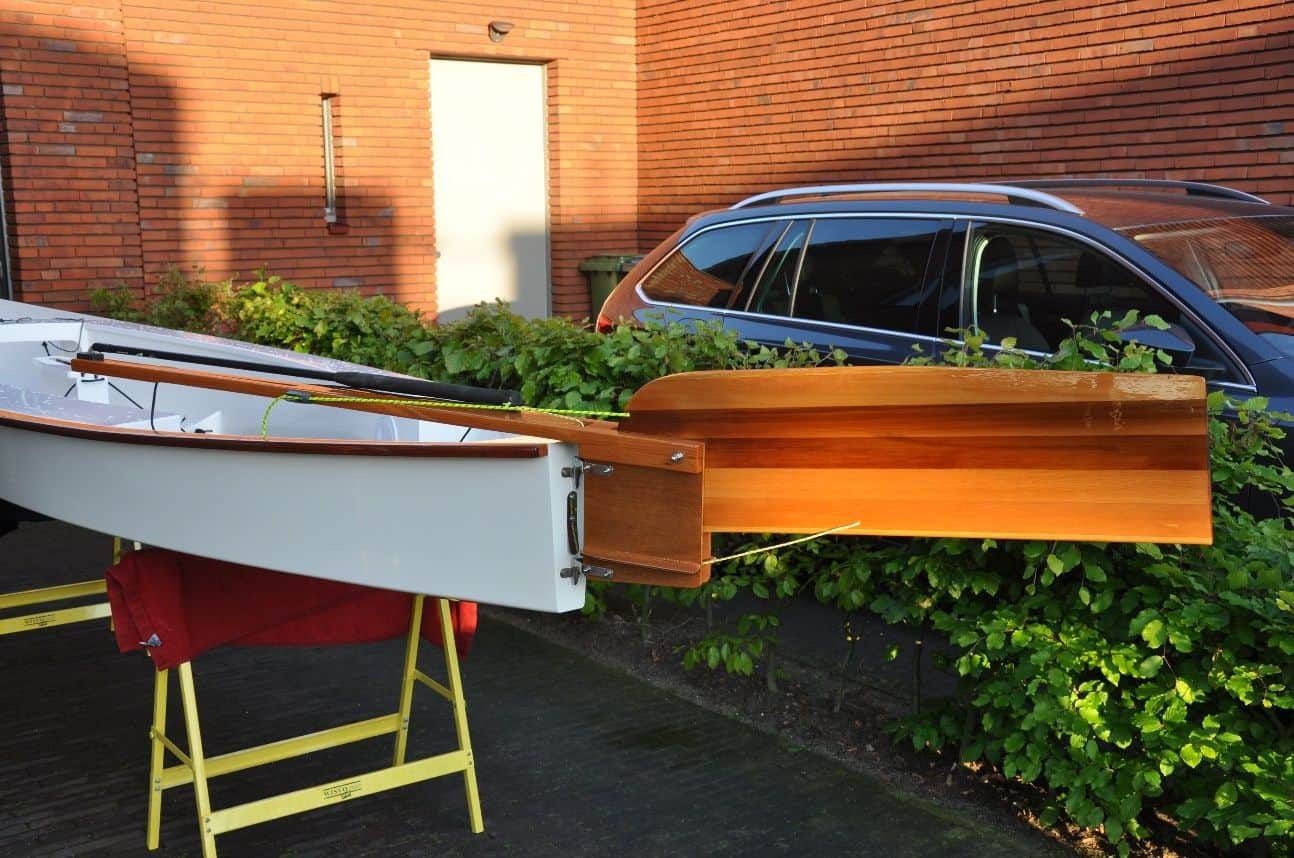Perhaps you’ve been thinking about how you will approach building a kickup rudder or modifying your existing rudder for best function. It’s a head-scratching subject with lots of different possible approaches.
Considerations include but are limited to:
Will rudder kick-up entirely (good for beaching) or be adjustable (better if you need to maintain some steering)
Will your rudder kick-up automatically upon contact, or must it be raised manually—possibly after having been damaged?
Will you add weight to rudder to help keep it from floating up?
Will you use line and cleats to raise and lower or springs or screw knobs or something else entirely for tensioning?
Will your design employ the common “cheeks with blade between,” or use some sort of a cassette system?
Will your rudder system be dead reliable and can it be repaired easily if damaged?
Will installing and removing rudder take a lot of setup time and energy?
What follows is not a complete list of options, nor are any intended to be suggestions, but rather these photos and descriptions represent potential solutions to a kick-up or lifting rudder. Hopefully these images will stimulate some ideas. Feel free to leave comments on or links to other ideas below.
Here’s a slick rudder system kit from PT Watercraft. The kick-up rudder is simple yet can be locked down or up and can be folded back to fit in a foils case. The gudgeons are modified (by us) to be the right width for our rudder case and there are scribed marks machined into the case walls to show gudgeon location.
Here’s a drawing from the web showing a rudder riding between cheeks of pivot plates.
Here’s more or less the same idea from the Woodenboat forum.
Here’s another design. Note the hook and line to keep the rudder locked down.
Here’s a kick-up system with the blade riding on one side of the rudder stock. From the Maritime Dictionary site. Note it uses lead counterweight.
Here’s the kick-up plan for our SCAMP design, per designer John Welsford. This system uses an auto-release clam cleat to keep the blade down until it hits hard enough to pop the cleat loose.
Here is regular contributor, Guy Light’s, custom rudder design. Note folding tiller extension as well.
Here’s a cassette style rudder from the Duckworks Magazine site.
Here’s the cassette style framework used on Michael Storer’s Oz Goose design. The rudderbox keeps the blade vertical for light steering with the rudder at any level.
Speaking of Storer, here’s an uphaul/downhaul system for his Viola canoe.
This Sunfish sailor blogged about used spring tension to hold rudder down and up.
Hopefully these ideas have stimulated some of your own. —Eds •SCA•


















I use the KISS system on my oar and sail Harrier. A nice big bolt with big washers and a Nylock nut between two cheek pieces. It is carefully adjusted to be tight enough to hold the blade down when sailing yet kick up when beaching. No string, no cleats. You do have to get your hand wet to push it down into place after it kicks up, or have a forked stick, something I don't mind.
I like the single raising line on my Cruising Scot. Let it loose and down she goes. A large magnesium and a large zinc adds weight and serves me in salt or fresh water. Although the risk is minimal on a Scot. My dilemma is adding a wind vane on my tilt up rudder. Enjoy!